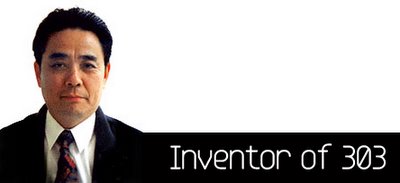
In early 1981, Kakehashi was invited to rescue Brodr Jorgensen, but the scale of its debts to other manufacturers made this impossible. However, he managed to repossess the huge inventory of Roland products held by Brodr Jorgensen's liquidators, thereby stopping the world market from being flooded by cheap equipment that would have undercut Roland's own sales. Simultaneously, he was filling the hole left by his distributor's demise. Building upon the joint-venture model he had already established elsewhere, he opened four new companies in the space of just three months. Roland UK opened their doors in January 1981, as did Roland GmbH (Germany), followed in March by Roland Scandinavia and Musitronic AG in Switzerland. Remarkably, Kakehashi also found the time to establish a new Japanese division, which he opened in May 1981. Called AMDEK (Analogue Music Digital Electronics Kits) this was a conduit through which Roland would market and sell Taiwanese products to its worldwide distribution network (see the above box).So, having averted disaster, the company was able to face the future with something approaching confidence. Nonetheless, there must have been some point in 1981 when Kakehashi wondered if he had lost the magic touch. Roland and Boss launched more than 30 significant products during the course of the year yet, despite critical success, few seemed to catch the public's eye. Take, for example, the company's first big, polyphonic synthesizer and its toy bass machine. The former made little impact, while the other was soon to end up in the bargain bins, sold off cheaply for whatever dealers could get for it. But hindsight is a wonderful thing, as was Kakehashi's belief in his company and its designs. The polysynth was the Jupiter 8 (see the box on the next page). The toy was the TB303 Programmable Bass Line.Before 1981, Roland's incursions into the field of polyphonic synthesis could at best be described as 'tentative'. The Prophet 5 and Oberheim OB-series dominated, so perhaps it's not surprising that the original JP8 made little impact when it was launched. Today, of course, it's one of the most revered of all synthesizers, the icon against which all Roland's subsequent polysynths have been measured (and, for many aficionados, found wanting...).At the far opposite end of the scale, the TB303 seemed to have few redeeming features. Initially marketed as a 'computerised bass machine', it and its stable-mate, the TR606 'Drumatix', were intended for use as replacements for a bass guitarist and drummer, tasks at which they were singularly unsuccessful. It had a single, unremarkable oscillator, a primitive envelope, and few facilities other than a built-in sequencer. Had it not been adopted for the first acid house tracks later in the '80s, it's possible that the TB303 would have been no more than a footnote in Roland's product history. And why was it used...? Largely because it was cheap and easy to understand.
Nowadays, of course, the TB303 is a staple of all types of dance music, able to chain user-programmed patterns into longer tracks, enlivened by Accent and Slide, and by the inevitable tweaks on its unusual resonant filter. Connected to a TR606 or TR808, or even the CR5000 and CR8000 CompuRhythm machines launched the same year, the TB303 produces an instantly recognisable sound that was eventually copied (with greater or lesser success) by almost every other synth manufacturer. There was even a fad in the mid-'90s for clones, with names such as MAB303, FB303, TBS303 and Tee Bee. The sincerest form of flattery indeed!
The production run of the TB303 lasted less than two years, but it's rumoured that in this time Roland churned out nearly 20,000 of them, so it's likely that they'll be with us for some time to come.

<< Home